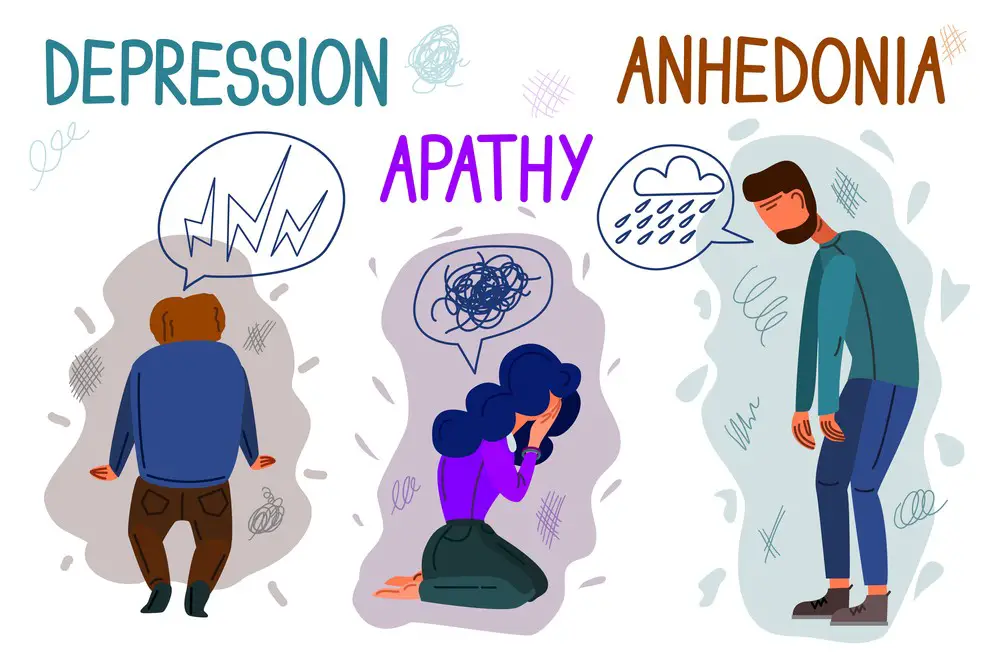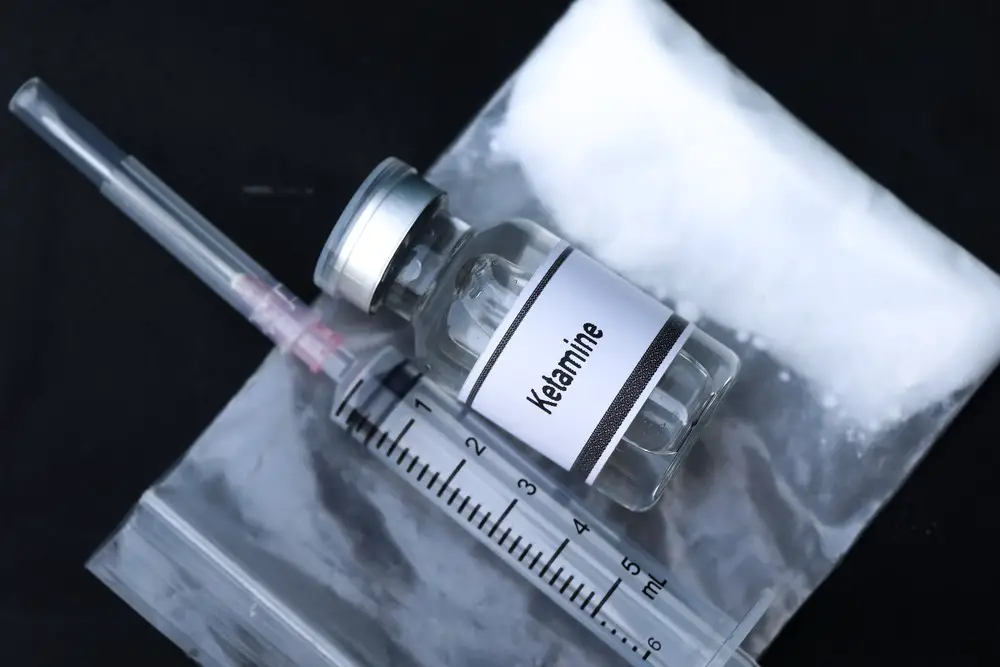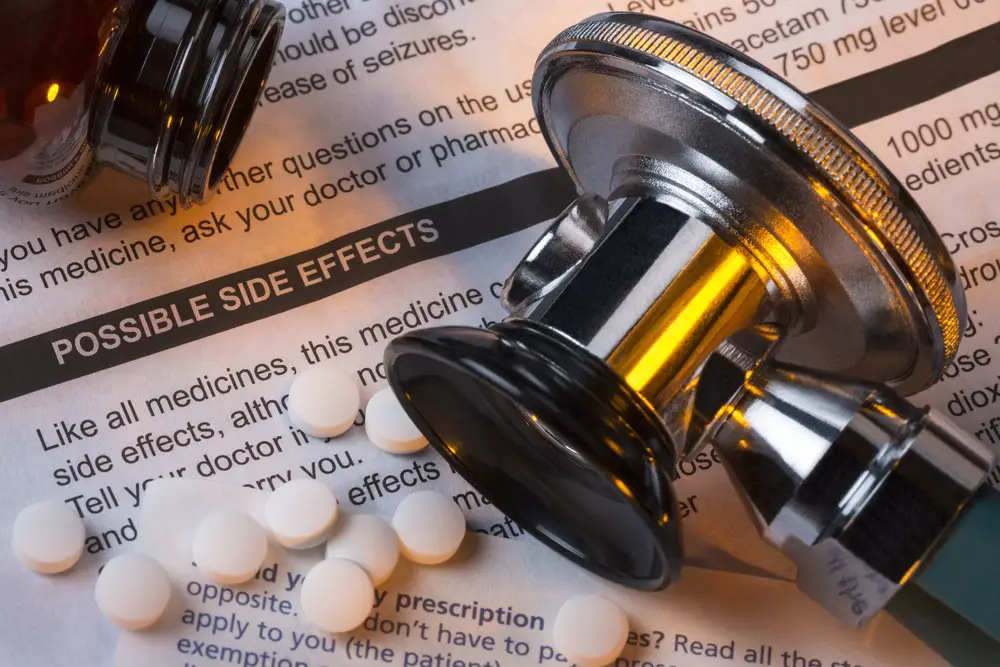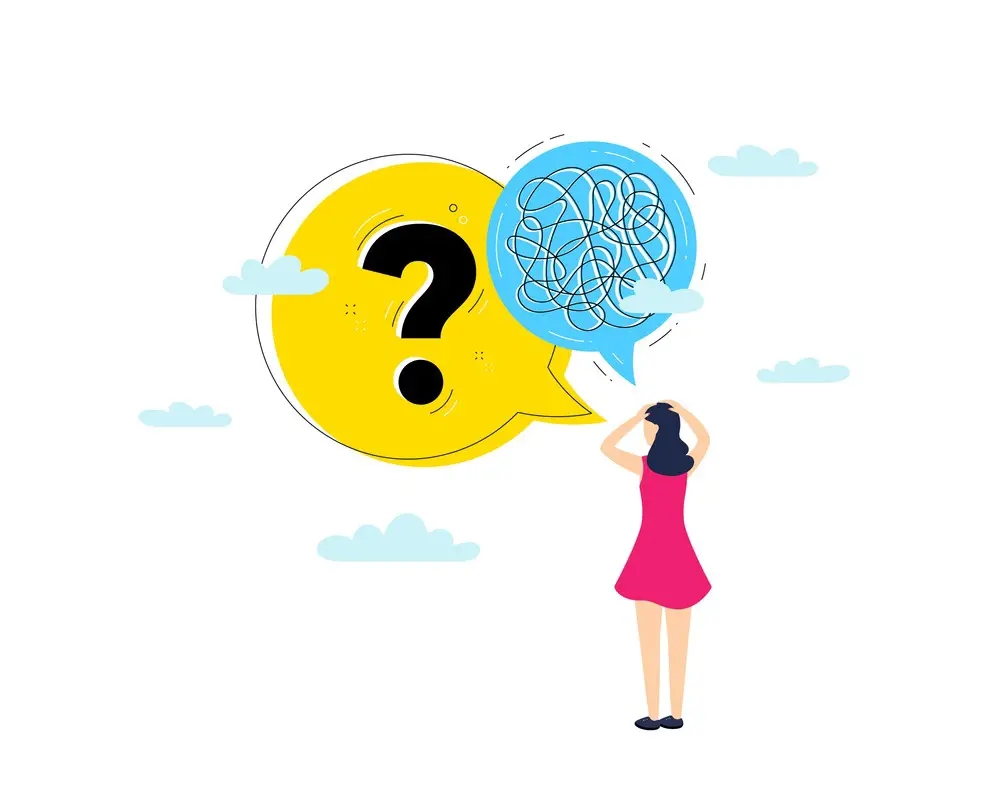As a BetterHelp affiliate, we receive compensation from BetterHelp if you purchase products or services through the links provided
Ketamine has been gaining attention as a potential treatment option for individuals suffering from treatment-resistant depression. As a dissociative anesthetic and analgesic, ketamine has been used in medical settings for years. However, its efficacy in treating depressive disorders has only recently been explored and established, with many patients and healthcare professionals becoming increasingly interested in understanding its effects and duration.
When using ketamine for depression, the question of how long the treatment lasts is crucial. This is especially true for those who have experienced little to no relief from traditional antidepressant medications and therapy. The duration of ketamine’s antidepressant effects can be vital in determining the best course of action and treatment frequency for patients considering this innovative approach. Research has shown that ketamine can provide rapid relief from depressive symptoms, often within hours of administration, but the lasting effects can vary from person to person.
Key Takeaways
- Ketamine is a potential treatment option for treatment-resistant depression.
- The duration of its effects on depression can vary and play a vital role in treatment planning.
- Research indicates that ketamine provides rapid relief from depressive symptoms.

Understanding Ketamine
Ketamine has gained attention recently for its potential as a fast-acting and effective antidepressant. Unlike traditional antidepressants, ketamine has a unique mechanism of action, functioning as an N-methyl-D-aspartate (NMDA) receptor antagonist and interacting with the AMPA receptor.
In treating depression, ketamine is usually administered as a nasal spray or intravenously. The nasal spray form of ketamine is called esketamine, marketed under Spravato. Esketamine is a more specific form of ketamine, also known as S-ketamine, while racemic ketamine is a mixture of S-ketamine and R-ketamine.
Traditional antidepressants often take weeks to months to achieve their full effect, while ketamine has been shown to provide rapid relief of depressive symptoms, sometimes within hours. This makes it a particularly valuable option for those suffering from treatment-resistant depression or experiencing suicidal thoughts.
Several factors contribute to ketamine’s effectiveness in treating depression:
- Its NMDA receptor antagonist properties play a role in rapidly reducing depressive symptoms by modulating glutamate transmission, which is important for learning and memory processes.
- Ketamine’s interaction with the AMPA receptor can enhance synaptic plasticity, improving neural connectivity and brain function.
- The NMDA antagonist action and AMPA enhancement are thought to stimulate the growth of new synapses in the brain, promoting long-lasting improvements in mood.
It is important to note that while ketamine demonstrates promising results as an antidepressant, its use is not without potential side effects and risks. Some common side effects include dizziness, nausea, and dissociative experiences. Furthermore, long-term use of ketamine could lead to addiction, as it is known to have abuse potential. Consequently, it is essential that medical professionals closely monitor the use of ketamine for depression.

Ketamine and Depression
Ketamine, a dissociative anesthetic drug, has gained attention for its rapid antidepressant effects in individuals with depression, including major depressive disorder, bipolar depression, and suicidal thoughts. It is believed to work through a different mechanism than traditional antidepressants, making it a promising treatment option for those who have not responded well to conventional therapy.
Depression is often associated with a range of symptoms, including persistent sadness, loss of interest in activities, sleep disturbances, changes in appetite, and feelings of worthlessness. In severe cases, depression can lead to suicidal thoughts or attempts, making prompt and effective treatment crucial.
Traditional antidepressant medications, such as selective serotonin reuptake inhibitors (SSRIs) and serotonin-norepinephrine reuptake inhibitors (SNRIs), typically take weeks or months to alleviate depressive symptoms. However, ketamine has been shown to significantly improve mood within hours, offering a faster alternative for those with treatment-resistant depression.
The precise mechanism through which ketamine exerts its antidepressant effects is not fully understood. It is thought to act on the glutamate system in the brain, which plays a critical role in mood regulation. By targeting N-methyl-D-aspartate (NMDA) receptors, ketamine enhances neural plasticity and promotes the growth of new synapses, thereby fostering a more resilient and adaptive response to stress.
While the benefits of ketamine for depression are clear, its duration varies depending on factors such as dosage, route of administration, and individual variations in metabolism. Single doses of ketamine are reported to provide relief from depressive symptoms for up to a week, while repeated treatments can extend this effect. Additionally, some studies suggest combining ketamine with other treatments, such as cognitive-behavioral therapy, may enhance its effectiveness and relieve symptoms.
Concerns about the safety and potential side effects of ketamine also exist. Common side effects include dizziness, blurred vision, and dissociative experiences. However, most of these effects are short-lived and dissipate once the drug is eliminated. In supervised clinical settings, ketamine’s side effects are well-tolerated, and its benefits often outweigh potential risks.
In conclusion, ketamine offers a unique and rapid-acting option for treating depression, including treatment-resistant cases and those experiencing suicidal thoughts. While the duration of its antidepressant effects may vary, ongoing research aims to optimize treatment protocols to maximize its benefits and minimize potential risks for individuals struggling with mood disorders.
Key Benefits of Ketamine Treatment
Ketamine treatment offers several notable benefits for individuals experiencing depression. One of its key advantages is its rapid onset of action. Unlike traditional antidepressant medications, which may take weeks to provide noticeable relief, ketamine can significantly improve mood and symptoms within hours or days after administration.
Another important benefit of ketamine therapy is its high treatment response rate. Studies have shown that ketamine can be effective in cases where conventional antidepressant treatments have failed. For patients with treatment-resistant depression, ketamine’s unique mechanism of action, involving synaptogenesis and focusing on the glutamatergic system, presents a promising alternative to traditional antidepressant treatment.
In addition to its rapid and effective treatment response, ketamine may provide longer-lasting benefits for depression. Research suggests that even a single administration of ketamine can lead to sustained remission for some patients. Furthermore, ketamine’s long-term effects on neural plasticity and brain connectivity may help facilitate the benefits of psychotherapy, enhancing its effectiveness and providing more comprehensive and lasting relief.
Some potential benefits of ketamine treatment include:
- Rapid onset of antidepressant effects
- High response rates, even in treatment-resistant cases
- Long-term effects that support and enhance Psychotherapy
- Potential for sustained remission after a single administration
Overall, ketamine therapy offers a distinctive and valuable approach to antidepressant treatment, providing rapid, effective, and long-lasting relief for those struggling with depression.

Ketamine for Treatment-Resistant Depression
Ketamine is a promising treatment option for patients with treatment-resistant depression (TRD). TRD occurs when an individual experiences little to no improvement in their depressive symptoms after trying multiple antidepressant therapies.
Ketamine, traditionally an anesthetic, has been found to reduce depressive symptoms, even in those with TRD rapidly. Its unique mechanism of action, targeting the NMDA receptor in the brain, sets it apart from conventional antidepressants. This difference allows for a faster response time, with some patients experiencing relief in hours to days instead of weeks or months.
Research suggests that a single infusion of ketamine can improve depression symptoms for up to a week. Multiple infusions over two weeks have also extended the relief duration from several weeks to months. The duration of ketamine’s effects, however, largely depends on individual response and the severity of the depression.
It is essential to note that while ketamine shows promise in treating TRD, it is not a first-line therapy. Patients should only consider ketamine after they have exhausted traditional antidepressant treatment options. Additionally, the long-term effects and safety of ketamine for depression are still being explored.
In conclusion, ketamine offers a new avenue for treating treatment-resistant depression. Its rapid onset and effectiveness in many TRD patients make it a valuable addition to the arsenal of antidepressant therapies. However, further research is needed to understand its long-term effects fully, and its use should be reserved for those who have not responded to traditional treatment approaches.

Ketamine Infusion Treatment
Ketamine infusion treatment is a unique approach to managing depression. Through intravenous ketamine (IV) infusion, the drug is directly administered into the patient’s bloodstream. This method is effective in addressing depressive symptoms, especially for those who suffer from treatment-resistant depression.
The IV infusion process typically involves a series of treatment sessions over a few weeks. The duration and number of IV infusions can vary depending on the individual’s response to the treatment and the severity of their depression. It is important to note that ketamine infusion should be performed under strict medical supervision to ensure a safe and effective treatment experience.
One major advantage of IV ketamine for depression is its fast-acting nature. Patients often report a significant improvement in their depressive symptoms within hours or days of receiving the infusion. This sets it apart from traditional antidepressants, which may take weeks to show noticeable effects. Additionally, ketamine infusion has been reported to help alleviate suicidal thoughts in some patients experiencing depression.
Although ketamine infusion treatment appears promising, it is essential to understand that it is not a one-size-fits-all solution for depression. The efficacy of IV ketamine infusion may vary from person to person, and it is crucial to consult a healthcare professional before opting for this treatment to determine if it is appropriate for the individual’s specific needs.

Potential Risks and Side Effects of Ketamine
Ketamine, while noted for its potential in treating depression, also carries a risk of side effects and adverse events. Some patients may experience nausea and vomiting shortly after receiving the treatment. Others might have dizziness or sensations of dissociation, making them feel detached from their surroundings. Additionally, anxiety and panic attacks have been reported in some cases, particularly among patients predisposed to these conditions.
There is also a risk of hypertension and increased blood pressure following ketamine administration. Patients with pre-existing cardiovascular issues should be closely monitored, as these side effects can exacerbate existing conditions. Sometimes, ketamine use has been associated with memory loss, hallucinations, confusion, and delusion. These can be temporary or, in rare cases, longer-lasting. Another uncommon side effect reported is dysgeusia or a distortion of the sense of taste.
As with any treatment, it is essential to consider the placebo effect. In clinical trials, some patients who received a placebo treatment instead of ketamine experienced improvements in their depression symptoms. This phenomenon highlights the importance of randomized, controlled studies to determine the true efficacy of ketamine and distinguish it from the placebo effect.
It is crucial to note that the potential for abuse exists with ketamine. While the doses administered for depression treatment are lower than those used recreationally, patients and healthcare providers should remain vigilant to prevent misuse. The long-term effects and addiction potential of ketamine treatment for depression require further investigation.
In conclusion, although ketamine has shown promise as a depression treatment, patients and healthcare providers must be aware of its potential risks and side effects. Proper monitoring and management can help reduce these adverse events and maximize the therapeutic benefit for depression patients who do not respond to conventional treatments.
Cost of Ketamine Treatment for Depression
The cost of ketamine treatment for depression varies depending on the healthcare provider, geographic location, and the prescribed treatment plan.
In general, ketamine treatments for depression are not covered by most insurance plans. This means that the patient will typically need to pay out-of-pocket for the full cost of the treatment. The average cost per infusion ranges from $400 to $800.
Treatment plans typically involve multiple sessions, often starting with 6 infusions for 2-3 weeks. This means that the initial cost for treatment can range from $2,400 to $4,800. Following the initial series of infusions, patients may require maintenance sessions every few weeks or months, further adding to the overall cost of ketamine treatment for depression.
Despite the cost, many patients report significant improvements in their symptoms after ketamine treatment. It is essential to weigh the financial investment against the potential benefits when considering this treatment option for depression. To find a reputable provider and obtain accurate pricing information for your area, consult your doctor or therapist.
Regulations and FDA Approval
In 2019, the FDA approved a form of ketamine called esketamine (Spravato) to treat depression. This FDA-approved nasal spray is a rapidly acting antidepressant used along with oral antidepressants for adults with treatment-resistant depression. Esketamine is the first novel antidepressant approved in the past 30 years.
The FDA’s decision to approve ketamine was based on the results from several randomized controlled trials conducted with participants suffering from treatment-resistant depression. These clinical trials demonstrated the drug’s effectiveness in rapidly reducing depressive symptoms, making it an essential option for those not responding to traditional antidepressants.
It is important to note that esketamine is a Schedule III controlled substance under the Controlled Substances Act, emphasizing safety concerns and potential abuse. As a result, esketamine can only be administered under the supervision of a healthcare provider in a certified treatment center rather than being prescribed for home use. This regulation ensures patients receive the medication in controlled and safe environments.
While esketamine has shown promise and provides another option for individuals suffering from depression, further research is needed to determine the long-term effects and optimal treatment duration using ketamine and esketamine. The FDA continues to monitor clinical trials and real-world data to ensure the safety and efficacy of these treatments for depression.

Future of Ketamine Treatments for Depression
Ketamine has shown promising results in treating depression, but its long-term use and potential side effects still need further investigation. As researchers understand how ketamine interacts with neurons and other brain components, more effective and targeted treatments may be developed.
A meta-analysis of existing studies could help identify the most beneficial doses, treatment frequencies, and patient populations for whom ketamine is most effective. Additionally, discovering reliable biomarkers could further refine treatment protocols by allowing clinicians to predict individuals’ responses to the drug.
In the coming years, researchers will likely focus on developing safer and more sustainable alternatives to the current formulations of ketamine. Long-term studies will be crucial in establishing the efficacy and safety of these treatments and understanding the potential drawbacks and challenges that may arise from their usage.
Despite the challenges, the future of ketamine treatments for depression holds great potential. Advances in understanding its mechanisms of action and improving treatment strategies can open new avenues for addressing depressive disorders and improving patients’ quality of life.
Other Therapeutic Applications of Ketamine
Ketamine has shown promising results not only in treating depression but also in managing other mental health conditions. In particular, post-traumatic stress disorder (PTSD), bipolar disorder, schizophrenia, and psychosis have all been studied in connection with ketamine therapy.
For patients with PTSD, ketamine has demonstrated rapid and significant reductions in symptoms. Clinical trials have reported that ketamine infusions can relieve individuals experiencing severe PTSD symptoms, even in cases where other treatments have failed. Further research, however, is needed to determine optimal dosing and frequency for prolonged relief in PTSD patients.
In the context of bipolar disorder, ketamine’s rapid and robust antidepressant effects have attracted interest in treating bipolar depression. Several studies have shown that a single low-dose ketamine infusion can produce rapid improvements in depressive symptoms within hours, with a much faster onset compared to traditional medications. This rapid relief is particularly beneficial for patients experiencing suicidal ideation or severe depression.
Regarding schizophrenia and psychosis, existing research is limited but offers some insights. Ketamine has been found to temporarily exacerbate psychotic symptoms in individuals with schizophrenia, making it unsuitable for acute treatment. On the other hand, some studies have suggested that low-dose ketamine may offer potential benefits for negative and cognitive symptoms of schizophrenia, pointing towards a possible role for ketamine in therapy, but further investigation is required.
In conclusion, ketamine holds potential beyond its current use in depression treatment. With continued research and clinical trials, its therapeutic applications could expand to cover other mental health disorders such as PTSD, bipolar disorder, and schizophrenia.

Frequently Asked Questions
How long does ketamine neuroplasticity last?
Ketamine is known to induce neuroplasticity, which can contribute to the improvement of depressive symptoms. The effects of ketamine-induced neuroplasticity typically last for about one week, but this may vary depending on the individual and the specific treatment protocol.
Days after ketamine infusion
The antidepressant effects of ketamine infusion can be seen relatively quickly, often within a few hours to a day after treatment. These effects usually peak at around 24 to 72 hours post-infusion and can persist for up to one to two weeks.
How long does ketamine last for sedation?
Ketamine has a short half-life, with its sedative effects typically lasting 45 minutes to 2 hours. However, the exact duration may vary based on factors like the dose used and individual differences in metabolism.
How long does ketamine infusion take to work?
Ketamine infusions are administered intravenously for 40 to 60 minutes. Most patients begin to experience improvement in depressive symptoms within hours of receiving treatment. However, the full benefits may take days or weeks to become apparent.
What is a Ketamine maintenance dose?
Following an initial series of ketamine infusions, some patients may require maintenance treatments to sustain the antidepressant effects. Maintenance doses can vary significantly, ranging from once a week to once a month or even less frequently, based on individual responses and the recommendations of a healthcare provider.
Can Ketamine be taken for depression long-term?
While ketamine has shown promise in treating depression, its long-term effects and safety profile are not yet fully understood. Further research is needed to establish optimal dosing regimens and better understand the potential risks and benefits of using ketamine for long-term depression.
- 3 Ways Wearing a Hat Can Help Lower Your Stress Levels - April 19, 2025
- Breaking the Silence: Why Men’s Mental Health Matters More Than Ever - April 15, 2025
- How to Transform a Home’s Patio Space into a Relaxing Space - March 23, 2025
This site contains affiliate links to products. We will receive a commission for purchases made through these links.


